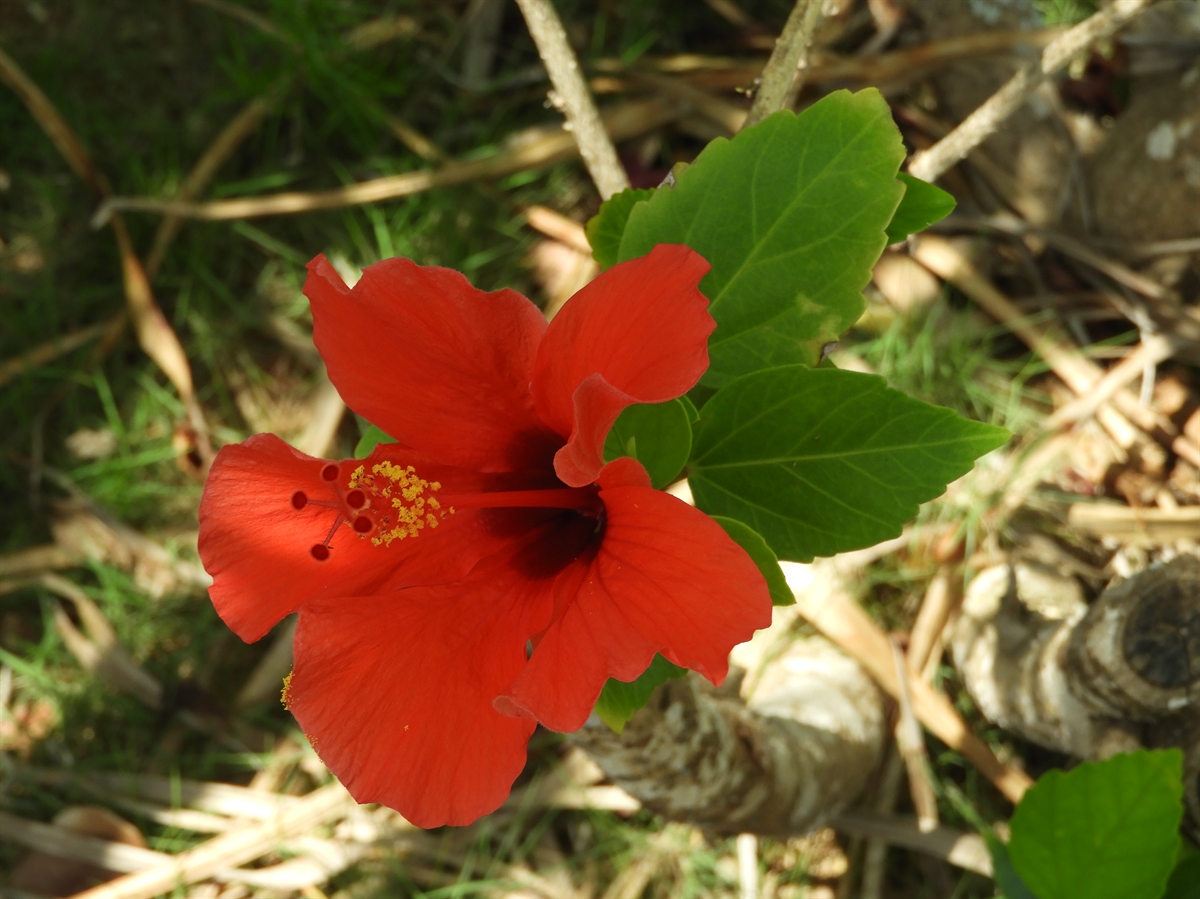Habit: Hibiscus rosa-sinensis grows as a shrub to small tree to 5 m in height. The leaves are arranged alternately, to 15 cm long, ovate with an acute/acuminate leaf apex, crenate margin and rounded leaf base.
The complete, perfect, actinomorphic flowers are solitary or in pairs in leaf axils. Flowers subtended by 5-7 bracts. The calyx has 5 green, fused sepals forming a shallow cup. The corolla has 5 red, white, yellow or pink petals (red is the most common color). There are numerous stamens that are fused forming a tube around the style. The ovary is superior with 5 locules and numerous ovules. The fruit is a woody capsule that is brown at maturity breaking apart rather than splitting along suture lines.
Habitat: Hibiscus rosa-sinensis grows in Human Altered environments (yards and gardens).
Distribution: Hibiscus rosa-sinensis is NOT native to the Lucayan Archipelago but now occurs on many islands. It is native to the Indian subcontinent and is now widespread in tropical and subtropical regions of the world.
Medicinal/Cultural/Economic usage: Hibiscus rosa-sinensis is not known to be used medicinally in the Lucayan Archipelago.
It is widely used in the horticultural industry for its large showy flowers.
